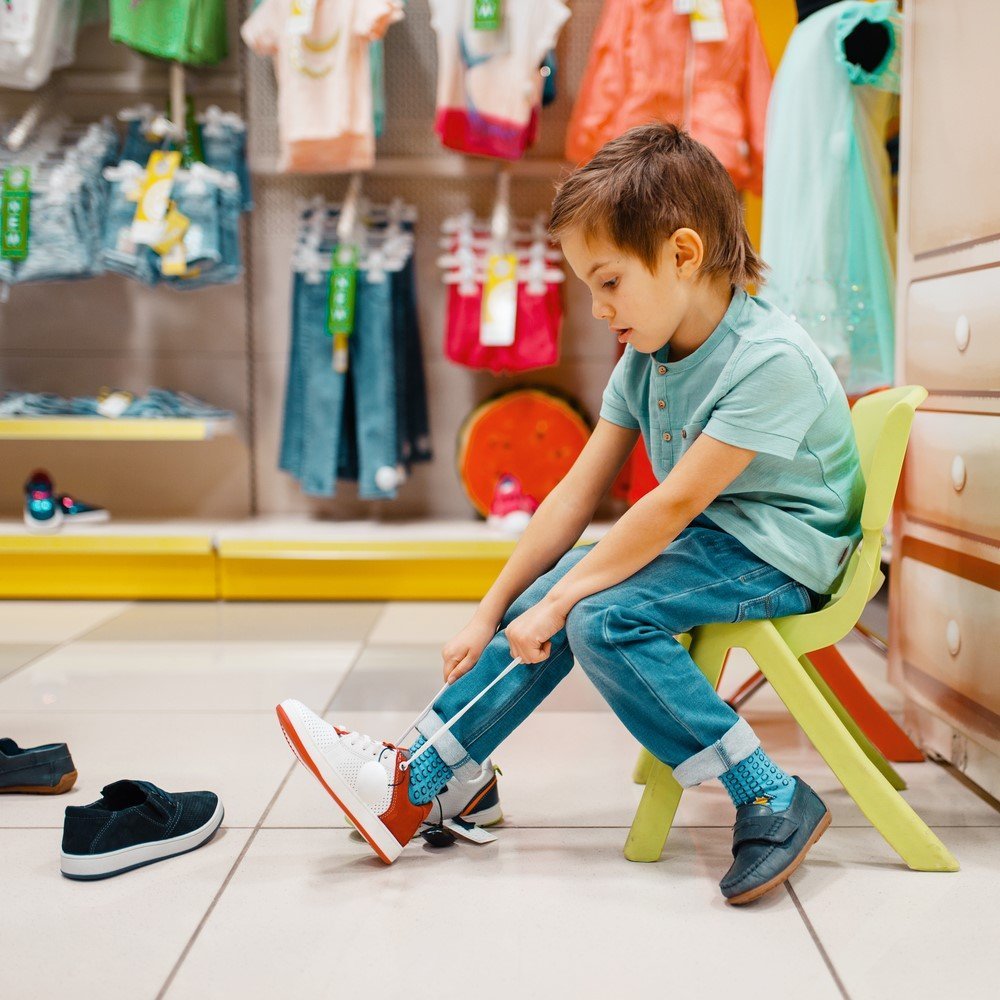
Why Proper Footwear Matters
Selecting the right footwear for your child cannot be overstated. Sneakers that fit well and provide proper support are crucial for growing feet, aiding overall health and physical development. When choosing kids sneakers, it’s essential to consider their impact on foot health, as poorly fitting shoes can lead to a host of foot problems. A child’s foot is in continual growth and development, and improper shoes can hinder this process, causing lasting damage.
A recent study reported by the American Podiatric Medical Association shows that poorly fitting shoes can cause various issues, ranging from discomfort to long-term deformities. These deformities can include bunions, hammertoes, and other painful conditions. This highlights the importance of making informed choices right from the start. Therefore, choosing the right sneakers is not just about style, it’s a health priority that requires careful consideration and attention to detail.
Key Takeaways
- Understand the importance of selecting the right sneakers for your child’s comfort and health.
- Identify the key features to look for, such as fit, material, and support.
- Learn practical tips for measuring your child’s feet accurately.
- Discover the benefits of different sneaker types based on activity and age.
- Gain insights from expert recommendations and scientific research.
Features to Look For in Children’s Sneakers
- Fit: It is paramount to ensure the sneakers fit correctly. Too tight shoes can cause blisters and discomfort, while overly loose shoes can lead to trips and fall. The right fit should leave a thumb’s width of space between the longest toe and the front of the shoe to accommodate growth and movement.
- Material: Opt for breathable materials like mesh or soft leather to keep feet cool and dry. Breathable materials help prevent moisture build-up, which can lead to fungal infections and odors. Look for fabrics that offer both comfort and durability.
- Support: Look for shoes with adequate arch support and cushioned insoles to absorb shock. Good arch support helps distribute weight evenly across the feet, preventing strain. Cushioned insoles provide extra comfort and reduce the impact of each step, which is particularly important for active children.
- Durability: Kids are active, and their shoes must withstand their adventures. Check for sturdy soles and reinforced toe areas. Durable shoes can withstand the rough-and-tumble nature of children’s play, extending the life of the footwear and providing better value for money.
Measuring Your Child’s Feet Accurately
- Please have your child stand on a piece of paper with their heel against a wall. This position ensures an accurate measurement by mimicking how their feet naturally spread under body weight.
- Mark the longest toe and the back of the heel on the paper. This step captures the entire length of the foot, which is crucial for finding the correct size.
- Measure the distance between the two marks using a ruler. Ensure the ruler is aligned straight to avoid inaccuracies.
- Compare the measurement with a sizing chart to find the correct size. Sizing charts vary by brand, so always check the specific chart for the sneakers you plan to buy.
- Remember to measure both feet, as they may be slightly different, and use the larger measurement when choosing shoes. Feet can grow at different rates, so always accommodate the larger foot to prevent discomfort.
Types of Sneakers Based on Activity and Age
Choosing the right type of sneaker also depends on your child’s activities and age. For toddlers just learning to walk, lightweight and flexible sneakers are ideal. These shoes allow natural foot movement and provide flexibility for developing muscles and coordination. Shoes offering more support and cushioning are better suited for active children involved in sports. Such sneakers help in shock absorption and provide stability, reducing the risk of injuries.
According to experts, it’s beneficial to match the sneaker type with activity to maximize comfort and support. For instance, running shoes are designed for forward motion and cushion each step, making them suitable for running or walking. Meanwhile, basketball shoes offer lateral support, which is essential for sports involving sudden changes in direction. It’s also important to consider the material of the sneakers, as some activities may require more breathable or water-resistant fabrics.
Expert Recommendations and Scientific Insights
Consulting with a podiatrist or pediatrician can yield valuable insights into selecting the best sneakers for your child. Experts can provide personalized advice based on your child’s specific foot shape and any potential issues. For example, children with flat feet may need shoes with more substantial arch support, while those with high arches might benefit from extra cushioning.
Additionally, research supports the benefits of orthotic-friendly sneakers for children with specific foot issues. Orthotic inserts can be used to correct abnormalities and support the natural shape of the foot.
Practical Tips for Shopping
- Shop later in the day when feet are more swollen, to ensure the shoes fit well throughout all daily activities. Feet can swell up to a half size more significant by the end of the day, so shopping in the afternoon or evening provides a more accurate fit.
- Bring the socks your child will wear with the sneakers for a more accurate fit. Different sock thicknesses can affect shoe size, so matching the socks to the actual wear conditions is important.
- Allow some room for growth, but not too much to avoid tripping hazards. A thumb’s space width at the toe box usually allows for growth without compromising stability and safety.
Conclusion: Investing in Your Child’s Foot Health
Investing time and effort into selecting the right sneakers for your child is worthwhile. Proper footwear supports their physical activities and overall health, building lifelong habits. Remember, the right pair of sneakers can make all the difference. Always consider fit, material, support, and specific needs to find the perfect shoes for your child. Doing so ensures they have the best possible start to a healthy and active life.
